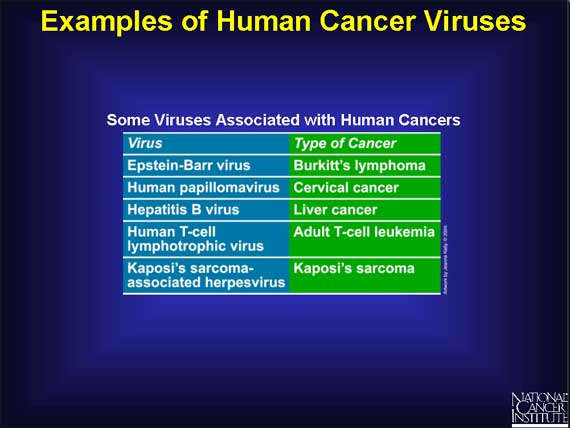|
Only a few viruses that infect human cells actually cause cancer. Included in this category are viruses implicated in cervical cancer, liver cancer, and certain lymphomas, leukemias, and sarcomas. Susceptibility to these cancers can sometimes be spread from person to person by infectious viruses, although such events account for only a very small fraction of human cancers. For example, the risk of cervical cancer is increased in women with multiple sexual partners and is especially high in women who marry men whose previous wives had this disease. Transmission of the human papillomavirus (HPV) during sexual relations appears to be involved.

< Previous | Index | Next Slide > |